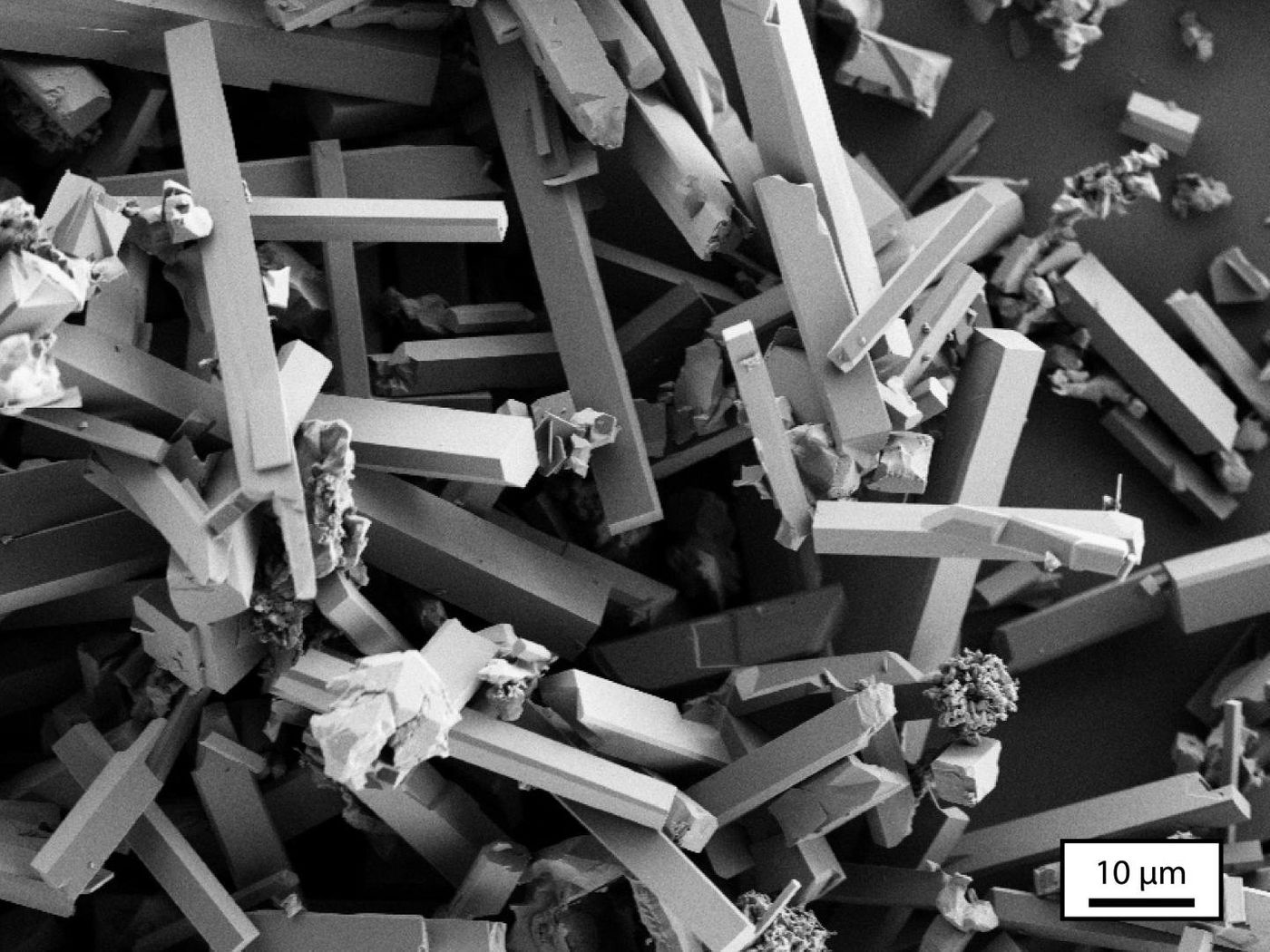Findings In Electrode Material Could Revolutionize Lithium-Ion Batteries Design
A study co-led by scientists from Rice University, the University of Wisconsin and Massachusetts Institute of Technology has revealed a surprising discovery on lithium-ion batteries electrodes that can change the course of how future battery is designed.
An electron microscope image of olivine lithium iron phosphate (LiFePO4) particles, the electrode material in lithium ion batteries. Credit: Linsen Li and Song Jin/University of Wisconsin-Madison
Lithium-ion batteries are incredibly popular these days. You can find them in laptops, cell phones, and even cars. Their popularity is founded on several important advantages over competing technologies: light weighted, high energy density, long charge-holding, no memory effect (meaning that they do not need to be completely discharged before recharging), and capability to handle hundreds of charge/discharge cycles.
But lithium-ion batteries have also got a lousy publicity lately. There have been multiple reports on the batteries of cellular devices either caught fire or exploded. When the battery pack fails, there is a chance that it bursts into flames (the odds are about two to three per million). A burning lithium-ion battery can result in financial loss, injuries, or even death.
Many efforts have been devoted to investigate further and improve the performance of lithium-ion batteries. For example, olivine lithium iron phosphate (LiFePO4) is a crucial electrode material for lithium-ion batteries. Many aspects of lithium transport within the material are still not well understood.
Combining X-ray spectroscopy powered by a synchrotron and mathematically modeling, the team of researchers managed to gain unprecedented insight into lithium transport in battery cathodes. They found that LiFePO4 releases or takes in lithium ions through a much larger surface area than previously thought, because of defects in the material’s crystal lattice.
Crystal lattice or structure describes the arrangement of atoms, ions or molecules in a crystalline material. Ordered structures usually form symmetric patterns that repeat along the principal directions of three-dimensional space in the matter.
Inside a defect-free, perfect crystal lattice of a lithium iron phosphate cathode, lithium can only move in one direction. Because of this, it is believed the lithium intercalation reaction can happen over only a fraction of the LiFePO4 particle's surface area, which does not match with how incredibly well this material works.
Such defects - atoms misplaced in the crystal lattice -fundamentally change the electrode's lithium transport properties and enable lithium to hop inside the cathode along more than one direction. That increases the reactive surface area and allows for more efficient exchange of lithium ions between the cathode and electrolyte.
The researchers considered the microscopic defects in LiFePO4 particles, which are impossible to eliminate in the fabrication, as a feature but not a bug. "People usually think defects are a bad thing for battery materials, that they destroy properties and performance. With the increasing amount of evidence, we realized that having a suitable amount of point defects can actually be a good thing,” explained Ming Tang, a material scientist at Rice University and a group leader.
Commenting on the finding’s relevance to practical applications and potential influence on future electrode design, Tang said: "What we learned changes the thinking on how the shape of lithium iron phosphate particles should be optimized," he said. "Assuming one-dimensional lithium movement, people tend to believe the ideal particle shape should be a thin plate because it reduces the distance lithium needs to travel in that direction and maximizes the reactive surface area at the same time. But as we now know that lithium can move in multiple directions, thanks to defects, the design criteria to maximize performance will certainly look quite different."
How Do I Make My Batteries Last Longer?. Credit: SciShow
Source: phys.org/Nature Communications









